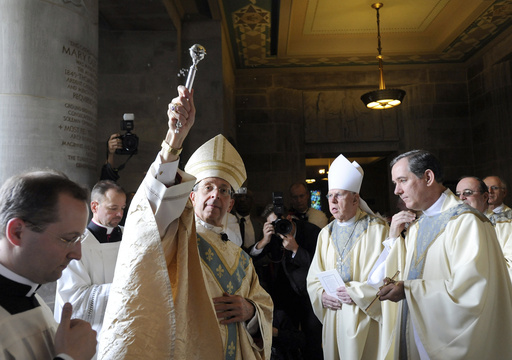BALTIMORE (AP) — Baltimore’s Catholic archdiocese, the nation’s oldest, will cut the number of parishes in the city and nearby suburbs by about two-thirds as part of a realignment plan responding to falling attendance and aging infrastructure.
Under the final plan released Wednesday, the number of parishes will drop from 61 to 23 with 30 worship and ministry sites.
Archbishop William E. Lori said feedback from four town hall meetings on a draft plan was crucial, The Baltimore Sun reported. The initial proposal shared with parishioners in April suggested reducing the number of parishes to 21 and the number of worship sites from 59 to 26, and parishioners’ arguments led to some changes.
“I hope that this lays the foundation for what the prophet Jeremiah calls a future full of hope,” Lori said. “It’s a move away from putting most of our energy into aging buildings, into leaky plumbing, I-beams in danger of collapsing, and roofs long beyond their capacity, and into having a manageable number of parishes really equipped to provide all the services that parishioners themselves have told us they want.”
The archdiocese has 153 parishes and missions in the city and nine central and western Maryland counties. The average parish in Baltimore has more than four times the space per parishioner than the rest of the archdiocese and the COVID-19 pandemic intensified this challenge. Pews that were 20% full in 2019 were only 9% full in 2022, according to the archdiocese website. Thirty-four parishes in Baltimore report more funerals than baptisms and conversions combined.
In an email to parishioners, Lori disputed rumors that the mergers and possible sales of church properties were tied to bankruptcy proceedings following the release last year of the state attorney general’s investigative report detailing the scope of child sexual abuse and cover-up within the archdiocese.
“This is not true,” he wrote. “Proceeds from any building sale will remain in the parish and follow the people to the newly formed parish.”
The attorney general’s report listed more than 150 clergy who were credibly accused of abusing over 600 victims dating back several decades.
